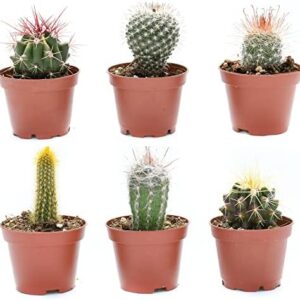Do you ever feel like no matter how much effort you put into caring for your plants, they still don’t look as vibrant and healthy as you want them to be? It can be frustrating to see your hard work go to waste, but don’t worry, there is a proven watering schedule strategy that can help you achieve greener, lusher plants.
Watering your plants may seem like a simple task, but many people struggle to find the right balance between underwatering and overwatering. Both can lead to issues such as yellowing leaves, wilting, and even root rot. That’s why having a watering schedule in place is essential for the health of your plants.
The key to a successful watering schedule is consistency. Plants thrive when they receive a steady supply of water, rather than being drenched one day and left to dry out the next. To achieve greener, lusher plants, you need to water them regularly, but not too often.
One important factor to consider when developing a watering schedule is the type of plant you have. Different plants have different water needs, depending on factors such as their size, age, and the environment they are in. Some plants prefer to be watered more frequently, while others can go longer periods without water. Researching the specific requirements of your plants is crucial in determining how often and how much to water them.
Another factor to consider is the type of soil your plants are in. Soil composition plays a significant role in how water is retained and distributed to the roots of your plants. If you have plants in sandy soil, for example, you may need to water them more frequently than plants in clay soil, which retains water better. Understanding the characteristics of your soil will help you develop a watering schedule that suits your plants’ needs.
One effective watering strategy that many gardeners swear by is the “deep watering” method. Instead of giving your plants a quick sprinkle every day, deep watering involves saturating the soil thoroughly to ensure the water reaches the roots. This encourages the roots to grow deeper into the soil, resulting in stronger, healthier plants. Deep watering also helps reduce moisture evaporation and promotes better water retention in the soil.
To implement the deep watering method, water your plants slowly and deeply, allowing the water to penetrate the soil rather than running off the surface. You can use a watering can or a soaker hose to water your plants evenly and efficiently. Make sure to water the base of the plant, as watering the leaves can lead to diseases and pest infestations.
In addition to deep watering, it is essential to water your plants at the right time of day. Watering in the morning is generally recommended, as it allows the plants to absorb the water before the heat of the day kicks in. Watering in the evening can lead to prolonged moisture on the leaves, making them more susceptible to fungal diseases. Avoid watering during the hottest part of the day, as the water may evaporate before it has a chance to benefit your plants.
Monitoring the moisture levels of your soil is also crucial in maintaining a healthy watering schedule. You can do this by sticking your finger into the soil to feel its moisture content or by using a moisture meter. By checking the soil regularly, you can avoid both overwatering and underwatering, ensuring your plants receive the right amount of water they need to thrive.
Overall, achieving greener, lusher plants is possible with a proven watering schedule strategy in place. By understanding the water needs of your plants, using the deep watering method, watering at the right time of day, and monitoring soil moisture levels, you can help your plants reach their full potential. So, next time you water your plants, keep these tips in mind and watch as your plants flourish before your eyes.






